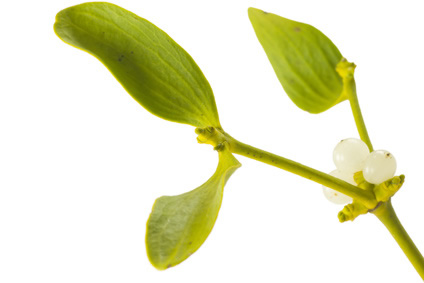Pectin is a complex carbohydrate that is abundantly present in citrus fruits. Modified Citrus Pectin contains a patented, low molecular weight citrus pectin that can pass through the intestinal barrier so it can work systemically. Pectin in its natural form cannot be absorbed by the body and is considered a type of soluble dietary fiber, whereas modified pectin can be absorbed into the bloodstream. Modified Citrus Pectin enters the circulatory system and reaches targeted areas of the body.
Modified Citrus Pectin Benefits
Modified citrus pectin may reduce the metastasis of certain types of cancers, including lung, prostate, and breast. The constituents of Modified Citrus Pectin (MCP) that are believed to be responsible for its beneficial properties are the galactosyl fractions. A number of cancer researchers have focused on a particular galectin-3 that has been found to be directly involved in the progression and spread of several types of cancers, including prostate, breast, and colon cancer. Galectin-3 plays an important role in cancer cell growth and spread, but modified citrus pectin works to stop that growth. Galactin-3 may do more than just help cancer cells interact—it may also play a role in angiogenesis, or the growth of new blood vessels needed to feed tumors. A new blood test, which measures circulating levels of galectin-3, has been approved by the FDA and most health insurance as a useful tool in helping to determine cardiovascular disease risk and prognosis, as well as risks of cancer metastasis.
 Animal studies and a couple of uncontrolled human studies have found that Modified Citrus Pectin may inhibit the spread of prostate cancer and melanoma to other organs. Melanoma Studies have reported that Modified Citrus Pectin may also decrease the metastasis of various melanoma cancerous cells. Binding to melanoma cells and human breast carcinoma cells has been demonstrated in vitro .
Animal studies and a couple of uncontrolled human studies have found that Modified Citrus Pectin may inhibit the spread of prostate cancer and melanoma to other organs. Melanoma Studies have reported that Modified Citrus Pectin may also decrease the metastasis of various melanoma cancerous cells. Binding to melanoma cells and human breast carcinoma cells has been demonstrated in vitro .
Breast Cancer An in vitro study reported that Modified Citrus Pectin decreased the adhesive qualities of malignant breast carcinoma cell lines when incubated with blood vessel endothelia, thus decreasing metastasis. Results of a mouse study published in 2008 showed that MCP fed to mice that had been injected with colon cancer cells inhibited the spread of cancer to the liver. A more recent human study examined galectin expression in 27 patients with invasive breast cancer. The study revealed that increasing histologic grades of breast cancer exhibited a decrease in galectin-3 expression, possibly resulting in increased cancer cell motility and metastasis.
They reported a statistically significant increase in PSA doubling time among 13 patients with prostate cancer treated with MCP following surgery and/or androgen-deprivation therapy. MCP has the potential to moderate interactions between cells, which helps to maintain healthy tissues. Its ability to bind to galactose-binding lectins is the proposed mechanismby which it supports healthy cells. In a clinical trial of Modified Citrus Pectin for prostate cancer published in ‘Prostate Cancer and Prostatic Diseases‘ in 2003, men with prostate cancer who took Modified Citrus Pectin had slower production of PSA, a marker of cancer growth. Pectin was also shown to induce apoptosis in adenocarcinoma cells in vitro via caspase-3 activity resulting in DNA degradation.
Modified Citrus Pectin contains polysaccharide components that researchers have shown shift T cell balance to favor Natural Killer cell activation. Modified Citrus Pectin has immunostimulatory properties in human blood samples, including the activation of functional NK cells against K562 leukemic cells in culture. Researchers demonstrated that Modified Citrus Pectin induced a dramatic ten-fold increase in NK-cell activation, and furthermore a significant 53.6% increase in the NK-cells functional ability to identify and destroy leukemia cancer cells.
Dr. Eliaz developed PectaSol® MCP as the first modified citrus pectin for human use. As the first proven natural Galectin-3 blocker, PectaSol is the only dietary supplement known to offer powerful support for healthy Galectin-3 levels. PectaSol has undergone numerous clinical tests demonstrating its ability to support healthy cell growth, and recent research published by Columbia University analyzed the positive effects of PectaSol on cellular health. The 2004 Nutrition Business Journal Product Merit Award was awarded to PectaSol, Modified Citrus Pectin.
How to Use Modified Citrus Pectin?
Modified Citrus Pectin Dosage: Dosages range from 6 to 30 grams per day in divided dosages; a typical dose is 5 grams three times daily. Modified Citrus Pectin in capsule form, 1-6 capsules (800 mg. per capsule) three times daily is recommended. PectaSol modified citrus pectin molecules are standardized to a molecular weight of 10-20,000 daltons.
Modified Citrus Pectin Side Effects
Modified citrus pectin is not recommended in pregnant or breastfeeding women due to a lack of available scientific evidence. People may have laxative effects and diarrhea at high doses. Some people may be allergic to Citrus Pectin and experience itch or rash. Modified citrus pectin may also increase the urinary excretion of metals, which may have adverse interactions with some medications to treat certain diseases or conditions. Those who wish to use modified citrus pectin for the management of prostate cancer or any type of cancer must be under medical supervision.
 Nattokinase enhances the body’s natural ability to fight
Nattokinase enhances the body’s natural ability to fight  Studies indicate that Indole-3-Carbinol has potential value as a chemopreventive agent for breast cancer through its estrogen receptor modulating effect. There is also evidence to support the fact that I3C has a different mechanism of action than tamoxifen and that these two substances can be used synergistically. Indole-3-Carbinol initiates a series of reactions in the body that culminates in the elimination of estrogen. Researchers have observed that metabolism of estrogen occurs via one of two pathways: The ‘harmful’ metabolic pathway, 16 alpha-hydroxylation, or the ‘beneficial’ metabolic pathway, 2-hydroxylation.
Studies indicate that Indole-3-Carbinol has potential value as a chemopreventive agent for breast cancer through its estrogen receptor modulating effect. There is also evidence to support the fact that I3C has a different mechanism of action than tamoxifen and that these two substances can be used synergistically. Indole-3-Carbinol initiates a series of reactions in the body that culminates in the elimination of estrogen. Researchers have observed that metabolism of estrogen occurs via one of two pathways: The ‘harmful’ metabolic pathway, 16 alpha-hydroxylation, or the ‘beneficial’ metabolic pathway, 2-hydroxylation. According to
According to  Red clover contains genistein, a compound that prohibits the growth of blood vessels into tumors, preventing the growth of the tumor as well. Red clover contains a form of vitamin E known as tocopherol, which is a powerful anticarcinogenic compound. Tocopherol helps to prevent the growth of cancerous tumors and lowers the risk of developing, particularly breast cancer. Some doctors believe that isoflavones increase the risk for a return of estrogen-dependent cancers, while others site evidence that suggests the isoflavones bind to the receptors that cancer cells require to divide and actually prevent or delay the return of cancer.
Red clover contains genistein, a compound that prohibits the growth of blood vessels into tumors, preventing the growth of the tumor as well. Red clover contains a form of vitamin E known as tocopherol, which is a powerful anticarcinogenic compound. Tocopherol helps to prevent the growth of cancerous tumors and lowers the risk of developing, particularly breast cancer. Some doctors believe that isoflavones increase the risk for a return of estrogen-dependent cancers, while others site evidence that suggests the isoflavones bind to the receptors that cancer cells require to divide and actually prevent or delay the return of cancer.